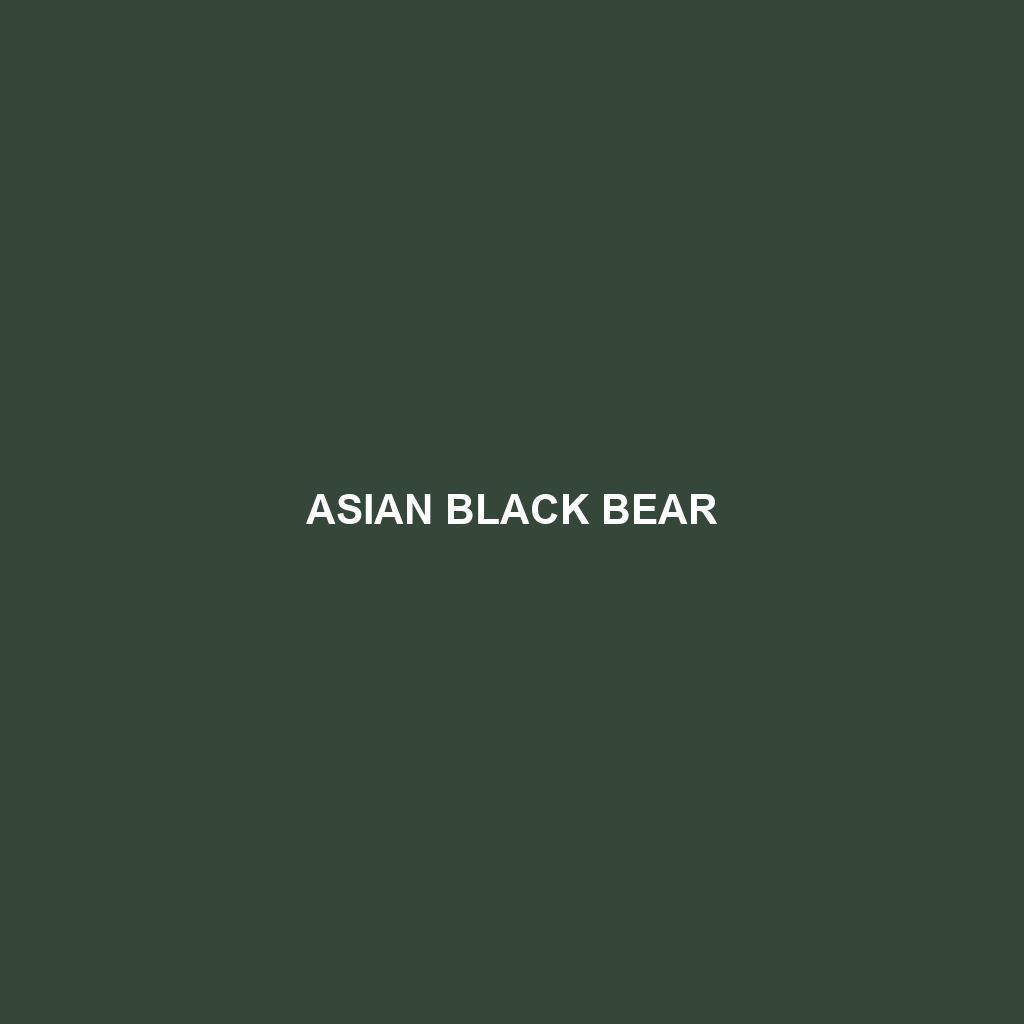Asian Black Bear (Ursus thibetanus)
Common Name: Asian Black Bear
Scientific Name: Ursus thibetanus
Habitat
The Asian Black Bear is primarily found in the mountainous and forested regions of Asia. Its habitat ranges from the foothills of the Himalayas to the dense forests of Southeast Asia, including countries such as India, Nepal, Bhutan, China, Japan, Korea, and parts of Vietnam. These bears thrive in temperate forests, subtropical regions, and mountainous terrains, generally preferring areas with abundant vegetation and access to water sources.
Physical Characteristics
Asian Black Bears are medium to large-sized bears, typically weighing between 220 to 440 pounds. They possess a distinctive black coat with a characteristic white crescent-shaped marking on their chest. Adult bears can reach lengths of up to 6.5 feet, with a rounded face and large, fluffy ears. Their powerful limbs are equipped with long claws, which aid in climbing trees, an activity that is crucial for their survival and feeding habits.
Behavior
These bears are primarily solitary animals, except during mating season and when mothers are raising cubs. They are most active during dawn and dusk, showcasing crepuscular behavior. Asian Black Bears exhibit strong climbing skills and are known to ascend trees in search of food. They are also adept at foraging and digging, displaying intelligence and adaptability in their search for sustenance. Communication includes vocalizations, scent marking, and body language, particularly when establishing territory.
Diet
As omnivores, Asian Black Bears have a varied diet that includes fruits, nuts, leaves, insects, and small mammals. They also consume honey, which demonstrates their strong sense of smell and determination in foraging. Their feeding habits change seasonally, with a preference for high-calorie foods during the summer and autumn months to prepare for hibernation. This diverse diet is crucial for their energy needs and plays a significant role in the dispersal of seeds within their habitat.
Reproduction
Asian Black Bears typically breed between May and July, with a gestation period lasting about 7 to 8 months. Mothers give birth to one to three cubs, usually in a den during the winter months. The cubs are born blind and are dependent on their mother for the first few months of their lives. Maternal care is essential as mothers teach their offspring survival skills, setting them up for a successful life in the wild.
Conservation Status
The Asian Black Bear is currently classified as vulnerable by the International Union for Conservation of Nature (IUCN). Habitat loss, poaching, and illegal wildlife trade are significant threats to their population. Conservation efforts are underway in various countries to protect their habitats and mitigate human-wildlife conflicts.
Interesting Facts
Asian Black Bears are sometimes referred to as “moon bears” due to the crescent-shaped marking on their chests. They have excellent climbing abilities, which allow them to escape predators and find food. Additionally, these bears play a vital role in their ecosystem by aiding seed dispersal through their feeding habits.
Role in Ecosystem
Asian Black Bears are important contributors to their ecosystem as seed dispersers, helping maintain the health and biodiversity of forests. Their foraging behavior influences vegetation dynamics and provides habitat for other species. Additionally, as apex consumers, they help control populations of smaller mammals and insects, fostering a balanced ecological community.
